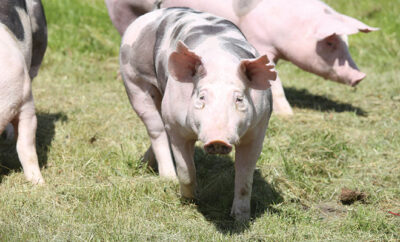
Let Them Eat Bride’s Cake!
So many milestones in life–birthdays, graduations–are celebrated with food. But one particular celebration above all others tends to be very formal and very expensive–weddings. Between securing a venue, catering a meal, ordering flowers and buying the wedding cake, a wedding budget can expand rapidly.
For now, let’s just focus on the sweetest part of the menu: the wedding cake. How did the customary wedding cake come to be part of the wedding tradition?
The earliest mention of wedding cakes in Roman times involved small cakes made of wheat or barley. These grains were associated with fertility, abundance and good fortune. The custom was for the groom to break a small cake over the bride’s head, with guests taking pieces of the broken cake for themselves to share their good fortune.
This small cake evolved over the centuries until, in medieval times, the custom was to create a tower of sweet buns. Stacked in layers, the bridal couple was meant to kiss over this tower without knocking any of the buns out of place, with this lucky kiss ensuring that their marriage would be one of good health, happiness and prosperity.
Eventually the tradition of baking sweet buns evolved into baking sweet cakes, bound together with frosting, made into a tower. This became a popular choice for those who could afford the luxury of sugar. Those who could not favored a savory main dish called Bride’s Pie. It might be filled with oysters, cockscombs, boiled calves’ foot, lamb testicles or mincemeat. This inexpensive, hearty fare symbolized abundance and good fortune. Small charms might be baked into the pie; the lucky guest whose slice of pie contained a ring was said to be the next person who would be married.
As refined sugar became more plentiful, the trend toward sweet cakes became more popular. The purity of costly white sugar had a double meaning: it confirmed the wealth of the bride’s family and alluded to the bride’s virginal status. Bride’s pie evolved into bride’s cake, which in turn became a tiered cake that imitated the traditional tower of baked buns. Nuptial couples continued the tradition of sharing a kiss for good luck over these tiered cakes.
What defining moment created the traditional tiered wedding cake? Perhaps the benchmark is the iconic wedding cake that was created to celebrate the marriage of Queen Victoria and Prince Albert. The cake itself was nine feet in circumference, and its pure white icing has been referred to ever since as “royal icing.” The British royal family continued to celebrate with ever-more-impressive wedding cakes. When then-Princess Elizabeth married Prince Philip in 1947, their nine-foot-tall tiered wedding cake weighed an astounding 500 pounds.
Across history, the wedding cake has ranged from utter simplicity to elaborate tiered cakes. Today, wedding couples have just as many choices whem selecting their cake.
We’ll begin with simple choices, based on the wisdom that less is more. Many people unknowingly imitate the historical tower of sweet buns by creating stacked cupcake trees. Having layered tiers of cupcakes offers guests the option of serving themselves as well as having a variety of flavors to choose from, bypassing the formality of cutting a cake. One variation on the cupcake tower is the croquembouche, a tower of little cream puffs, or profiteroles, often wrapped in spun sugar. This little tree of cream puffs also allows guests to serve themselves one delicious bite, ignoring the formal tradition of cutting and plating individual servings of cake.
Those who choose a traditional tiered cake can put a modern, edgy spin to the design by embellishing it as elaborately and dramatically as they wish. One trend is using metallic icings on cakes; gold, silver or bronze cakes stand on their own, but they also lend themselves to décor ranging from art deco to embroidered lace. This masculine industrial look can be combined with more feminine tiers of sugar ruffles, and those ruffles are stunning on their own in tiered layers.
Some couples choose the totally deconstructed naked cake. This cake is all about what’s inside, with icing and filling only between the layers. Totally nude with minimal accents of fruit or flowers, it’s a unique and memorable way to showcase the cake itself.
Cost-savvy couples can marry the beauty of an elaborate cake with the simplicity of a small budget with a “fake cake.” These cakes have a partial layer made of real cake, with other layers made of polystyrene foam that are elaborately decorated with icing and embellishments. Guests will never know the difference. These creative and affordable cakes prove the exception to the old saying, “You can’t have your cake and eat it too.” ■
Sources: gastronomica.org, smithsonianmag.com and weddingservices.eclectic-choice.co.uk.







